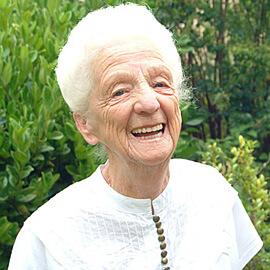Blepharoplasty, rhytidectomy, mastopexy. Do these words seem nonsensical to you? If so, read on for DCM's demystification of cosmetic surgery - we speak with both industry insiders and those who have gone under the knife to discover what it entails and what it can do for you.
What is cosmetic surgery?
Alongside its reconstructive counterpart, cosmetic surgery falls under the umbrella of plastic surgery - ‘plastic' being derived from the Greek term plastinos, meaning to mould or shape.
Plastic surgery is a speciality that uses surgical techniques to improve the appearance or function of the body. While reconstructive surgery corrects birth defects and the destructive effects of trauma or disease, cosmetic surgery changes features considered unflattering.
Dr. Meredith Jones, UTS-based academic and author of Skintight, conveys the history of cosmetic surgery is long. "Operations date from at least as early as 600 B.C. when Indian surgeons were making new noses from flaps of skin." Similar reconstructions were performed in Europe from 1400 on, but were denounced by the Roman Catholic Church as an "unnatural and immoral science." It was not until the First World War that cosmetic surgery became "a powerful and fully recognised branch of medicine," with New Zealander Harold Delf Gillies (1882 - 1960) inventing many techniques that are still used today.
Common cosmetic procedures include:
- Abdominoplasty: Where excess skin and fat are removed from the middle and lower abdomen in order to tighten the muscle and fascia of the abdominal wall. Also known as a ‘tummy tuck.'
- Blepharoplasty: The process of removing skin and fat from the upper and / or lower eyelids.
- Brow / forehead lifts: Where stab incisions are made above the hairline so as to cut and raise the muscles of the brow.
- Cheekbone / chin augmentation or reduction: The process of placing small implants under the skin or filing bones down.
- Dermabrasion, laser or acid peel treatments: Where the skin is resurfaced by removing dermis either chemically or mechanically so that new skin can grow.
- Injectables: The process of injecting products such as Botox and collagen into the skin so as to freeze muscles and plump up wrinkles and lines.
- Liposuction: Where cannulas are inserted between the skin and muscle, then connected to a suction machine, so fat cells from localised areas can be removed.
- Lip surgery: The process of injecting a product such as Restylane or a patient's own tissue or fat into the lip to create a fuller look. Another example is vermilion advancement, where the mucosa on the inner lip is turned out to increase lip volume.
- Mammoplasty: The process of breast augmentation or reduction. This is performed by inserting sacs of sillicone or saline, or removing breast tissue via incisions in the breast, nipple or armpit.
- Mastopexy: The process of lifting saggy breasts.
- Otoplasty: Where the ear is re-shaped or pinned.
- Rhinoplasty: The re-shaping of the nose via bone and cartilage reduction or manipulation.
- Rhytidectomy or ‘S' lift: Where the skin and muscles of the jaw and neck are lifted and tightened after cutting an ‘S' shape around the ear.
Cosmetic surgery for over 50s
Dr. Howard Webster, Melbourne-based plastic surgeon and President of the Australian Society of Plastic Surgeons, claims the fundamental aim of cosmetic surgery is "for women to look younger and for men to look better." He explains: "Often if you try and make men look younger, they end up looking a little strange - some of the operations can feminise their features."
Howard furthers: "For men, you don't want to make anything look too tight. Men also go bald, making scarring more difficult to conceal." So on men, he performs a lot of eye-lid surgery as well as brow and neck lifts: "You can do that and make men look a lot younger and fresher without demasculinising them."
When it comes to women, Howard says the most common operation is a lower face and neck "to restore the neckline, jaw line and get ride of jowls." Eye-lid surgery is the next most popular, then comes mid-face surgery "for when people get baggy lower lids and deep folds around the mouth."
Howard also performs a number of breast reductions and tummy tucks on women over 50. He conveys: "It is quite a positive experience for people who have a lot of loose skin either from weight loss or many pregnancies. When they are younger, they don't have the time or resources, but as they get older they give themselves permission to care about their appearance more. They might say, ‘Look, this has always bothered me, but I just couldn't do anything about it until now.'"
Howard notes that: "Liposuction for both women and men doesn't work as well when you are over 50 - the skin doesn't bounce back very well. So for this age, we do a lot less liposuction and a lot more tummy tucks and body-shaping procedures."
What to think about if considering cosmetic surgery
In Australia, publications on cosmetic surgery - The Art of Cosmetic Surgery and Body, Health and Beauty, for instance - abound. Meredith warns readers to be cautious of such magazines, stating: "I would say they are unreliable... they are a kind of hybrid media form, a cross between information and advertising, entertainment and marketing."
So where should you look for objective information? Meredith says: "The best place to start is probably the Australian Medical Association (AMA) or a GP. I would also look on the internet as much as possible; try and look at bad results as well as good results. There is a very good book, The Australian Guide to Cosmetic Surgery by Libby Harkness, most local libraries would have it. Read that."
She then suggests visiting at least three different surgeons - plastic surgeons. "See someone who can call him or herself a plastic surgeon; they are specialists and have done many, many years of training. Cosmetic surgeons may have only done a couple of week's worth of training. Look at doctors' before and after shots, and speak to people that have had the same surgeries - a good surgeon should have patients that will be happy to talk about their experience."
Howard agrees about the importance of seeing a plastic surgeon. He states: "If you were going to have a knee reconstruction or a hip replacement, would you go to an orthopaedic surgeon or a GP? Plastic surgeons are surgical specialists in the same way that cardio or orthopaedic surgeons are. Cosmetic surgeons are by and large general practitioners that describe themselves as cosmetic surgeons and don't have a core of specialist surgical training."
He recommends visiting your GP and ensuring you are healthy before considering cosmetic surgery: "Patients should not consider having surgery if they have poor health, if they are diabetic and it is not controlled, if their blood pressure is high, or if they have heart disease. Also, if your weight is not appropriate, that can be a problem. Work with your GP to ensure you are healthy enough for surgery."
Only then should you "seek a consultation or a couple of consultations with plastic surgeons with good reputations," says Howard. You can find fully-trained plastic surgeons through the Australian Society of Plastic Surgeons website or your GP.
Meredith finally advises you to "remember that cosmetic surgery is a service and you are a consumer with consumer spending power as well as being a patient. And if you are considering cosmetic surgery, you really need to see it in the context of your whole life - don't expect it to change everything for the better, as there is no way it will."
Case studies
Rosalind Henderson
Rosalind Donaldson is a spritely 82-year-old who lives in Wahroonga, New South Wales. She was 67 when she decided to have a breast reduction.
Rosalind: "I had four children and breast-fed them all. I used a D-cup, and just had terrible trouble in the hot weather - the underneath of my breasts would become red raw. I knew that you could get a breast reduction done, but I didn't know of anyone who'd had it. I just decided I would go and see a specialist and see what he said."
"I went and saw a good surgeon and he said he felt for me. I said, ‘I just can't go another year like this.' He was a local man and I just went down to the Sanatorium (Wahroonga) and had it done. One of the nurses asked, ‘Why did you decide to have this done at your age? And I said, "It is a necessity, I just have to have it.'"
"I was in hospital for a few days - I had to have a general anaesthetic. It wasn't terribly painful afterwards, and there was little scarring actually. I don't think anyone could tell that I had had it done now."
Kay Smith
Kay Reid is a 60-year-old former nurse from Hawthorn, Victoria. She had several cosmetic procedures when she was 50 years of age.
Kay: "When I was nursing, we used to go down to the pub and there were these little old ladies that used to sit at the bar, and they had those lines above their lips. Their lipstick used to bleed into the lines; I hated it. That is why I had it done - I hated the idea of turning into one of those little old ladies."
"I knew the plastic surgeon as he had done plastic surgery on a friend that had burns. He had done a good job with her, so I went to him. At the same time, I had my ears put back - I had them done when I was 40, but one didn't quite work well enough. All my life, my ears stuck out at right-angles, it was terrible. I put up with it as a kid, but as I got older I wanted to have short hair and so I decided to put them back."
"The minute I woke up from the aesthetic I thought, ‘What have I done?' But that was just the anaesthetic - it does something to my head. The actual afterwards wasn't painful at all. There were no huge bandages or anything like that, no scarring. You would never even know that I had had it done. I thought the wrinkles around my mouth would come back after a certain amount of time, but they never have."
Howard believes "over 50s considering cosmetic surgery are fortunate that the standard of plastic and cosmetic surgery available to them in Australia is very high and the equal of anywhere." Yet, both Howard and Meredith maintain it is important to do your homework and find the best qualified surgeon with whom you feel confidence and empathy.
Dr. Meredith Jones teaches media and cultural studies at the Institute for Interactive Media and Learning, UTS. Her book Skintight: An Anatomy of Cosmetic Surgery, was published by Berg (Oxford) this year.
Dr. Webster operates from the Linley Plastic Surgery in Hawthorn, Melbourne. He has been on the council of the Australian Society of Plastic Surgeons since 2001 and was made president last year. For more information on the Australian Society of Plastic Surgeons, please click here.






